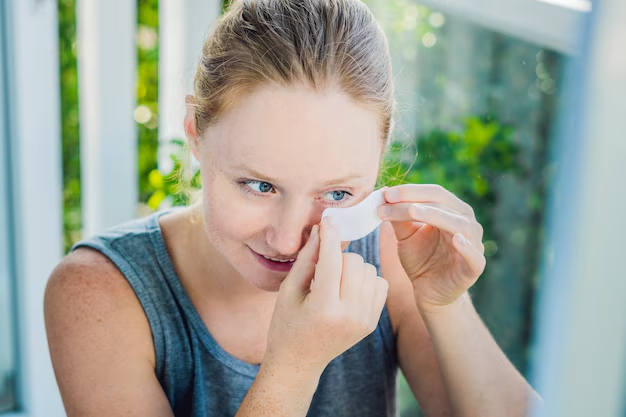Are Eye Drops a Cure for Cataracts? Here’s What You Need to Know
Cataracts are a leading cause of vision impairment globally, affecting millions of people. They develop when proteins in the eye's lens clump together, resulting in cloudy vision, making it difficult to see clearly. As more people seek non-surgical solutions to manage or even cure cataracts, eye drops have come into focus as a potential remedy. But can cataracts truly be cured with eye drops? This article delves into the possibilities, limitations, and what the future might hold for this buzzworthy treatment option.
Understanding Cataracts: The Basics
What Are Cataracts?
Cataracts occur when the clear lens of the eye becomes cloudy. This process is usually gradual and can significantly affect one's ability to perform everyday tasks like reading and driving. Cataracts are predominantly age-related but can also result from factors like diabetes, prolonged exposure to sunlight, smoking, or eye injuries.
Symptoms to Watch For
Common symptoms of cataracts include:
- Blurred or cloudy vision
- Sensitivity to light and glare
- Difficulty seeing at night
- Double vision in a single eye
- Fading or yellowing of colors
Current Treatments
The standard treatment for cataracts is surgical removal, which involves replacing the cloudy lens with an artificial one. This surgery is widely successful and commonly performed, often restoring clear vision to those affected.
The Eye Drop Cure: Fact or Fiction?
The Quest for Non-Surgical Solutions
The idea of curing cataracts with eye drops is enticing, especially for those who wish to avoid surgery. But the question remains: is it feasible? Recent research has explored the potential of certain compounds in eye drops to dissolve the protein clumps that cause cataracts. While this may sound promising, it's important to understand the current state of scientific evidence and practical application.
Research and Developments
Lanosterol and Other Compounds
One potential breakthrough involves lanosterol, a naturally occurring steroid. Initial studies in animals showed that lanosterol could significantly reduce cataract severity. However, translating these findings to humans is complex and ongoing.
Another compound drawing attention is N-acetylcarnosine. Some commercially available eye drops claim to use this antioxidant to reduce cataract progression. Yet, scientific evidence supporting these claims is limited and not definitive.
Current Limitations
There are several hurdles to introducing an effective eye drop treatment for cataracts:
- Efficacy: Many compounds show promise in labs but fail to demonstrate significant results in clinical settings.
- Safety: Long-term safety is a concern that extensive human trials need to address before widespread use.
- Regulation: Eye drops must undergo rigorous testing and regulatory approval before being marketed as a treatment.
Exploring Other Non-Surgical Options
While the potential of eye drops is still under investigation, patients may consider other non-surgical strategies to manage symptoms or slow cataract progression.
Lifestyle Adaptations
- Diet: Consuming a diet rich in antioxidants—found in leafy greens, fruits, and nuts—may support eye health.
- Protection: Wearing sunglasses that block UV rays can help protect the eyes from further damage.
- Healthy Habits: Avoiding smoking and controlling diabetes can reduce cataract risks.
Vision Aids and Adjustments
- Eyeglasses: Using prescription glasses with anti-glare coatings can improve vision clarity.
- Lighting: Maintaining good indoor lighting can ease reading and reduce strain.
What the Future Holds for Cataract Treatment
As research continues, the hope is to develop a non-invasive, effective treatment for cataracts. While eye drops have not yet proven to be a miracle cure, the ongoing studies are promising and could lead to innovative solutions in the coming years. Patients eager for alternatives to surgery should keep informed about new developments and maintain regular consultations with their eye care professionals.
Stay Informed and Proactive
To stay ahead in the embrace of potential advancements:
- Regular Check-ups: Maintain regular eye exams to monitor cataract progression and discuss new treatment options with your doctor.
- Research News: Keep an eye on emerging research to understand the risks and benefits of new treatments as they become available.
- Community and Support: Engage with support groups to share experiences and learn about the latest in cataract management.
Understanding Limitations and Setting Realistic Expectations
While the tantalizing promise of eye drops as a cataract cure captivates many, realistic expectations are crucial. Here’s what you should keep in mind:
- Caution in Claims: Be wary of products claiming instant results without scientific backing.
- Consult Professionals: Always discuss any new treatment options with an eye care professional before considering them.
Ultimately, while the idea of eye drops curing cataracts may captivate the imagination, the current solutions remain on the surgical table. Stay hopeful for future possibilities, but grounded in present realities.
Quick Summary & Key Takeaways 🌟
- Cataracts are primarily treated through surgery, which is highly successful.
- Eye drops have not yet been proven effective in curing cataracts in humans.
- Research continues into compounds like lanosterol, with animal trials showing promise.
- Lifestyle changes and protective measures can help manage and slow cataract progression.
- Stay informed on developments and maintain regular consultations with eye care professionals. 🏥
- Consult with healthcare providers before trying new treatments. 👀
By understanding these facets, you make informed decisions and hold realistic expectations regarding cataract treatments.

Related Articles
- Are Cataracts Curable
- Are Cataracts Genetic
- Are Cataracts Hereditary
- Are Cataracts Nuclear Sclerosis
- Are Cataracts Painful
- Are Ivizia Eye Drops Okay After Cataract Surgery
- Are You Awake During Cataract Surgery
- Are You Awake For Cataract Surgery
- Are You Put To Sleep For Cataract Surgery
- Are You Sedated For Cataract Surgery